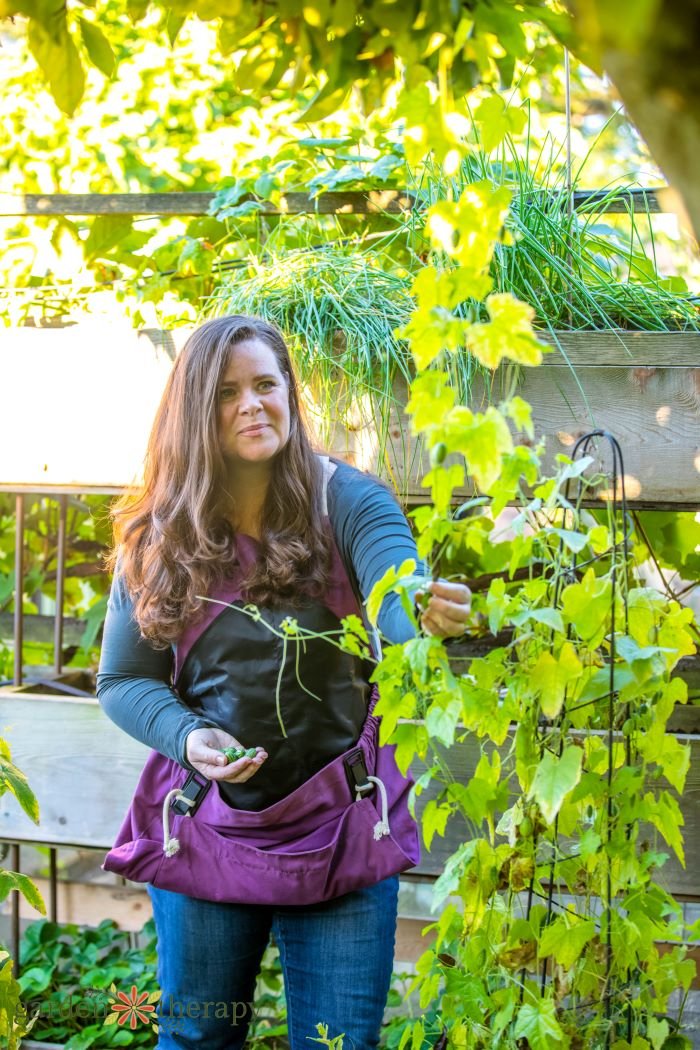Gardening is a joyful, therapeutic activity that everyone should be able to enjoy, no matter their capabilities. Accessible gardening allows you to create a space that works for you in a judgement-free zone. Here’s how to make gardening easier on the body and the mind.
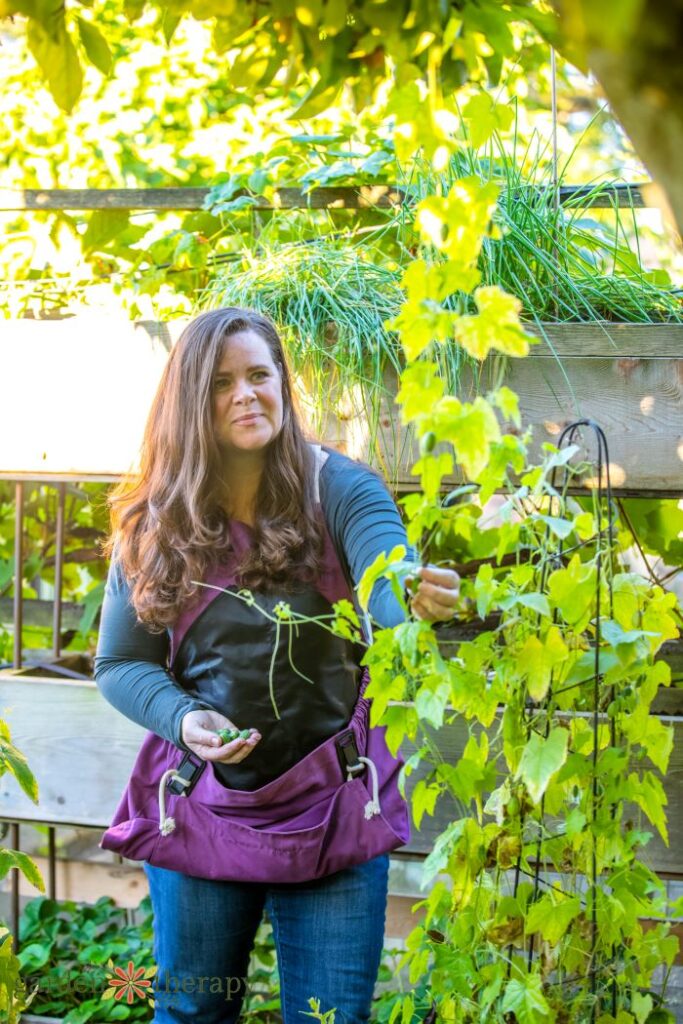
We often talk about gardening being one of the most accessible hobbies. You can do it with relatively no experience, get free or low-cost supplies, enjoy it year round, and find tons of support online.
But we don’t often talk about how physical gardening can be. I can get a serious arm workout just by using pruners for a half hour or work up a sweat with the number of times I squat while picking weeds.
Gardening is especially tough on the body for those of us who may be working with physical disabilities or aging bodies. Or, if you’re like me, both.
I’ve had to change my approach to gardening over the years to accommodate my body’s needs. As I’ve settled into my new house, I incorporated an accessible garden design to make things easier and hopefully allow me to garden for many years to come.
Let me show you how you can make your own accessible garden.


Letting Go of Expectations
Thanks to social media, we can see what other people are doing in their gardens at all times. I see people starting their seeds indoors in January when I’m still in recovery from the holidays. People are boasting about all the bulbs they want to plant when I can hardly bend over and put two packs of bulbs in the ground.
There are a lot of “shoulds” in gardening. You should be planting native species to support your local environment. If you don’t mow your lawn, your neighbours might give you the stink eye. Weed so your flower beds don’t look unkempt and wild.
Let go of all these shoulds.
All approaches to gardening are valid. If you want to do these things, then by all means do! If you envision your garden differently, then that’s what you should follow. Tailor your garden to your own needs.
We tend to be the hardest on ourselves, and the tyranny the shoulds only make us feel overwhelmed to get it all done. Try to do the best you can with forgiveness and kindness.
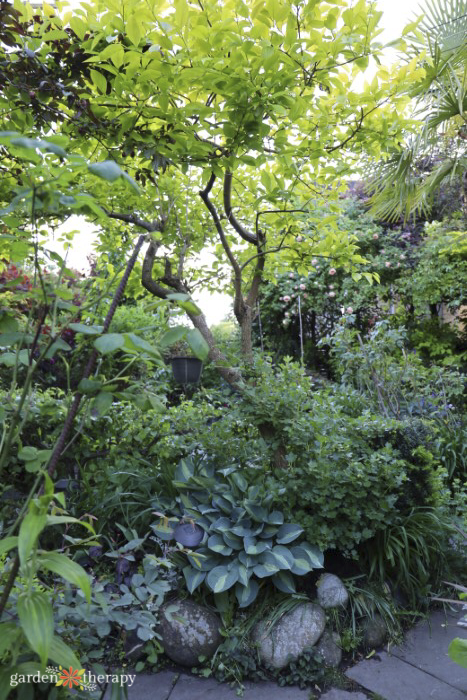

Understanding Your Own Needs
Before you get started, think seriously about your own needs and limitations. Getting a paper and pen and writing this down will help you really consider your unique situation.
Start with a self-assessment about what your physical abilities are. Personally, I often underestimate AND overestimate what my abilities are, and I think a lot of people might also.
I’ll think of everything I want to do and what I used to do. But if I’m having a flare-up or I’m struggling, I can’t get as much done. The same goes for the seasons. I can work more in the summer than in the winter because my body is more sore and stiff,
When I have an unrealistic expectation of what I should be able to do, I feel down and beat up because I’m not accomplishing it all—I don’t recognize all the work I’m actually getting done.
This is why doing an assessment of your physical abilities helps. Ask yourself…
- What is my energy like?
- How much time do I have available?
- What can I take on in this mental state?
- Am I in the right place to be doing these things?
- Why am I gardening? What am I hoping to get out of this?
Sometimes, you may be in a place that’s more suited to curling up with a blanket and sitting in the hammock chair in the garden as opposed to planting flowers and picking weeds. And that’s okay.
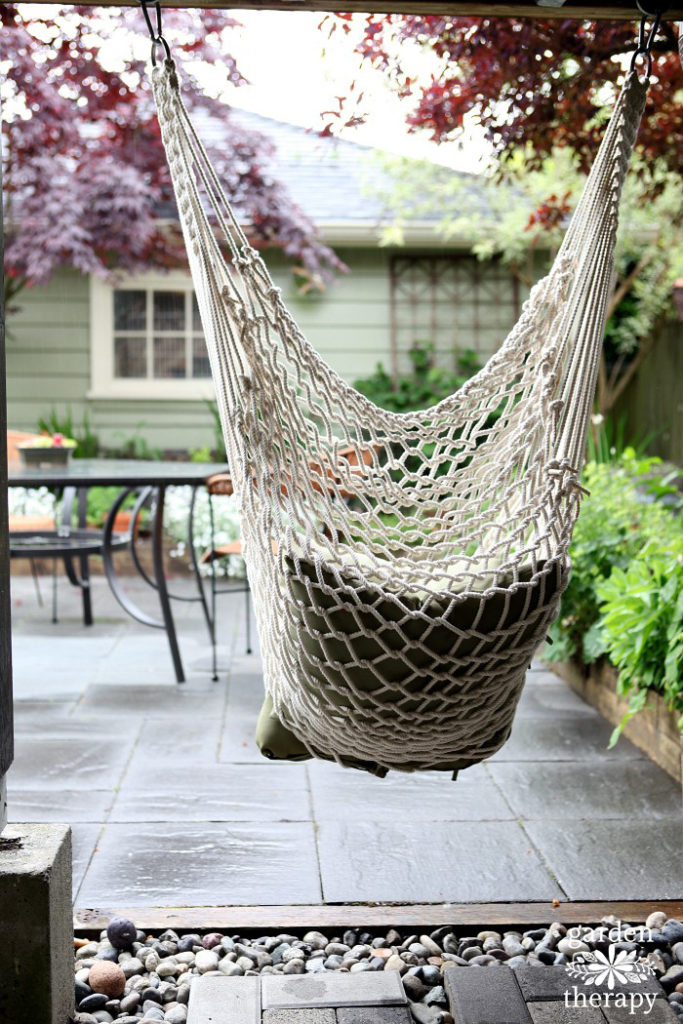

Accessible Garden Design
Accessibility is very personal and changes from minute to minute, day to day, week to week, and year to year. Start off by looking at what you can handle now, how you can make things better for the future, and adapt as your body and mind requires.
Gardening Beds
The cornerstone of every garden is the gardening beds. If all your beds are ground beds, you may want to think about pivoting to some different gardening designs. Ask yourself if your garden is set up for ergonomic and body-friendly designs.
Raised beds can ease the need to bend down and kneel over. Perhaps you can start thinking vertically. In my last home, I made a completely vertical garden bed to maximize my small full sun area and to make caring for my vegetable garden easier on my back.
Container gardening is also an excellent choice. You can move pots and containers closer to the home so you don’t have to go far to reach them, and you can care for them even while sitting.
If you’re reading this and going Oh no, my garden is going to need a total revamp, then that’s okay. Whatever you do, don’t set out to try and completely renovate your garden all at once. That will be too overwhelming.
Instead, try to adjust your gardening beds over time and ask for help. I moved in the fall of 2022 and spent the next year and a half slowly changing the new yard to accommodate my needs. It was a HUGE project, and I had a ton of help by hiring contractors and reaching out to friends. It is only now, this year, that I’ll finally get to start planting everything (and I’m so so so so excited!).
Accessible Tools
Many of our daily gardening tasks require tools to get done, from pruning shears to water spray guns. There are ergonomic and accessibility-friendly versions of almost all of these tools designed to lessen the load on your body and make gardening easier.
I have a whole post dedicated to these ergonomic tools, which you can check out here.
There are also tools which you may not already have, such as kneeling pads or an auger drill bit for planting.
Once again, it can be pricey to fully revamp all the tools in your garden. Purchase these accessible tools as you need them and rehome your other tools to a new gardener’s home (I like offering items on my local Buy Nothing Group).
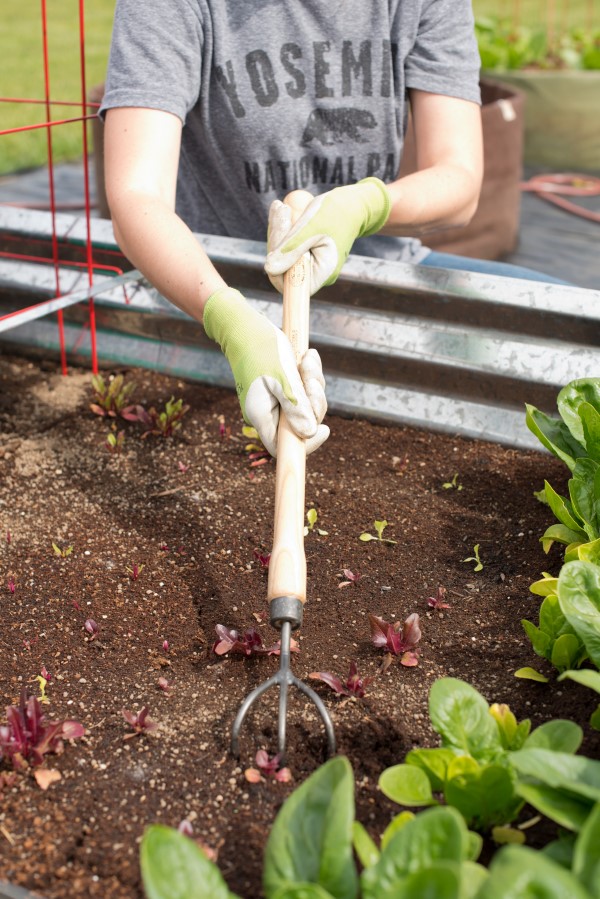

Mobility Friendly Design
Sometimes, just accessing gardening beds can be a problem. In my new home, they originally had one large gardening bed pressed against a fence. This meant that to reach anything in the back, I would have to climb and wade my way through the other plants.
Yeah, no. Not happening.
Have you made your garden easy to get around? It’s important to think about travelling around the garden while designing for accessibility.
Pathways are essential. While a pathway of large river stones may be beautiful, it will probably be difficult to walk on. You want pathways on which you can roll things, don’t have trip hazards, are wide enough, and are good for all seasons (frost can make things very slippery).
Also, consider adding a few seating options throughout your garden. You don’t want to go far if you need to sit for a moment to regain some energy.
Handrails are also important. Avoid covering them in decorative elements like planters, fairy lights, or garlands in the winter. You want handrails you can grip.
Do you have to go downstairs? Consider adding a grip to the staircase to avoid slipping. Long term, you may also want to consider adding ramps to your space as well.
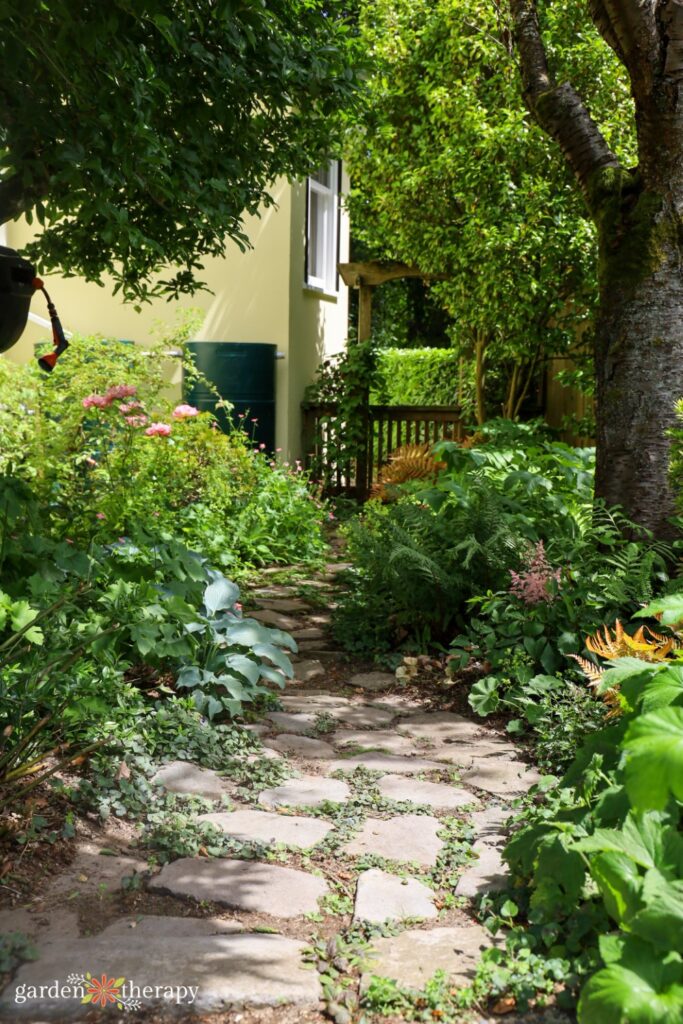

Low-Maintenance Plants
Plant choices can make a huge difference in making your garden work for you. Low-maintenance plants will give you the leeway between having to garden and wanting to garden.
Native species will naturally thrive in your area, so if you’re looking for spaces to fill, consider adding some. You’re not looking for perfection, so look for species that can thrive in your area. For instance, you may be able to grow palm trees in Vancouver, but it will take a lot of work. So, it might be best to grow a different tree instead.
Other plants that can add to the workload are those that need to be overwintered. If you need to dig plants up or move them into a greenhouse, they might be worth skipping (or grow them in containers so you can move them into a garage easily).
Or perhaps you approach your garden with an oh-well attitude. Everything stays put for the winter—you’re prepared to lose the plant. If it happens to survive, then bonus!
Don’t set yourself up for a bunch of extra jobs down the road that will cause you stress since you don’t know when you’ll be able to get them done.
Allow the plant to support your needs. Plant the things you love, the flowers that make you smile, the scents that remind you of fond memories, the vegetables you actually like to eat, or the herbs you can use for your own beauty products.
It’s not about what you don’t plant; it’s about what you do plant.
Permaculture Zones
One of my last tips for you is to consider permaculture zones. This is a method of grouping plants (and other garden structures) together based on how often you use them.
For instance, if you cook with herbs often, you might want them right outside your patio door so you can easily snip them without wading into the garden. Or you might strategically grow your vegetables on the side of the house with the hose so you don’t have to haul it far.
While there are technically five permaculture zones, they’re not supposed to be a rigid structure to follow. They’re supposed to work for you, so they’re a great practice for those looking for a more accessible garden.
I have a whole post dedicated to using permaculture zones to create an accessible garden, which you should definitely check out.
And those are my tips for creating a more accessible garden. I’d love for you to share your own tips in the comments below so that myself and others can utilize them to make gardening as friendly as possible for all ages and bodies.
More Ways for Accessible Gardening

